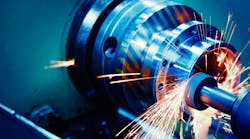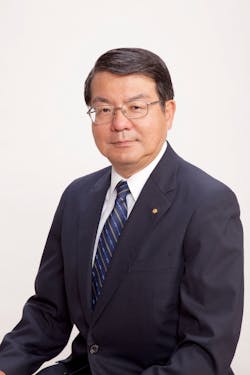Machine builder’s customers bring new machining technologies to integrate into platforms
Hiroyuki “Roy” Kawakami became president of Mitsui Seiki Kogyo, the parent company of Mitsui Seiki USA, in July. Kawakami has served Mitsui Seiki for more than 40 years.
He first joined the parent company in 1981 after earning a bachelor of commerce degree. Kawakami advanced through the company in various sales and management positions at the U.S. subsidiary, including vice president in 1994 and chairman in 2003. He moved back to the Japan headquarters in 2006 and has held several senior executive roles at Mitsui Seiki Kogyo since then, most recently as senior managing director.
Tell us about your company’s state-of-the-art machining technology.
Hiroyuki “Roy” Kawakami, president, Mitsui Seiki Kogyo: Mitsui Seiki has long been associated with bringing new technologies to the forefront. In many cases, our customers bring new machining technologies to integrate into our machine platforms for us to consider. Some of the developments that we have seen in recent years have incorporated new emerging technologies into conventional machining center platforms, such as additive processes and grinding. Mitsui Seiki’s ability to meet engineering challenges has been a key to our success over the years.
What have been the biggest improvements to machining in the past five years?
Hiroyuki “Roy” Kawakami, president, Mitsui Seiki Kogyo: Mitsui Seiki has taken this revolution in terms of combining several products or technologies in one platform. Everybody talks about combined and hybrid machines. But what is dreamed is often impractical. It sounds revolutionary, productive and efficient to associate doing multiple machining technologies in one platform. But, depending on what the machining operations are dictating, the benefit of combining different machines is difficult to appreciate. Is it really practical to combine a mill and a lathe, or a grinder and a mill, or an additive platform with milling, or grinding, or both?
From a human-resource perspective, maybe, but, with the advancements in robotics making inroads, does the part value support the idea to have a very high-end machine with perhaps mill/turning capability take on the part, or have a robot or operator move the parts from machine to machine?
What’s the most innovative or efficient machining application you’ve ever seen or been involved with?
Hiroyuki “Roy” Kawakami, president, Mitsui Seiki Kogyo: Hands down, our technology called Blue Arc, which is an emerging technology patented by General Electric for every efficient metal removal.
How has machining benefitted from remote monitoring and connectivity?
Hiroyuki “Roy” Kawakami, president, Mitsui Seiki Kogyo: Like anything else, the more you know about what is going on, the better you can judge and make adjustments.
Can you explain how software development has changed machining equipment’s design and production?
Hiroyuki “Roy” Kawakami, president, Mitsui Seiki Kogyo: From a design standpoint, the software available to us and the ability to use that software to design, analyze and engineer solutions have made the process of new machine development and for our custom machine development more efficient and thorough.
How does machining figure into and benefit from digital-twin platform models?
Hiroyuki “Roy” Kawakami, president, Mitsui Seiki Kogyo: The larger benefit in digital twin is really more from the part development side, as opposed to new machine development and manufacturing. However, for some of our customers it has proven itself a great time saver. With a digital-twin suite, you can start developing process solutions long before you finish building the machine. In today’s competitive market it has an advantage. The faster you are making chips the better the return on investment (ROI).
Also read: Mitsui Seiki Kogyo names Hiroyuki Kawakami
When will machining equipment become IT-friendly enough that engineers are no longer required for installation and operation?
Hiroyuki “Roy” Kawakami, president, Mitsui Seiki Kogyo: It’s hard to envision our world without engineers, no matter how far along IT evolves. Who will create this super smart IT? Who will adjust for any nuances in its application?
What future innovations will impact the use of machining equipment in manufacturing operations?
Hiroyuki “Roy” Kawakami, president, Mitsui Seiki Kogyo: The continued development and deployment of additive technology has the biggest window right now.
Also read: Mitsui Seiki Kogyo president on what's driving the industry and the company forward (from 2019)



